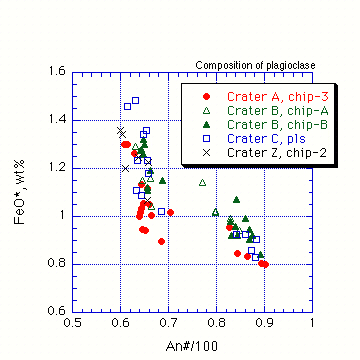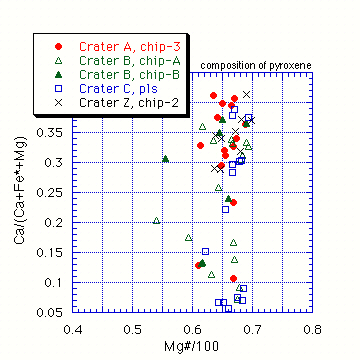These fragments have the high possibility of being volcanic ejecta by 6/27th eruption. We judged the volcanic products sampled at the sea bottom to be juvenile from the following reasons:
(a) Crater groups were discovered at the position just below the place where the discolored water area was found on June 27.
(b) The fresh crater landform is retained in spite of rapid ocean current at the sea bottom.
(c) The hot water (~140 degrees-C) gushes out from near central part in the crater.
(d)More than 95% fragments observed at the sea bottom in the craters is basaltic and has the following features:
-
(d-1) It has a ribbon-like or ropy shape which shows spouting out as a liquid in the free space.
- (d-2) It has many cracks which seem to be the water-cooling crush.
- (d-3) It has a glassy vesiculated crust and a more or less crystalline interior.
- (d-4) There is no mark caused by marine organism on the surface of the fragments.
- (d-2) It has many cracks which seem to be the water-cooling crush.
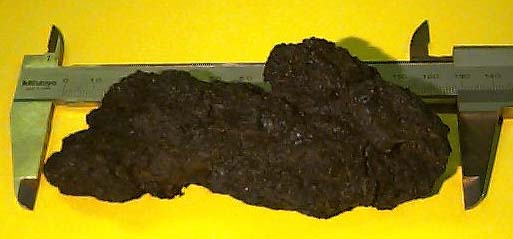
They are aphyric basalt, containing phenocrysts plagioclase ranging from approximately 0.5 to 2mm in diameter. The plagioclase is commonly zoned normally with glass inclusions in the core. The microphenocryst phases are plagioclase, clinopyroxene and magnetite.
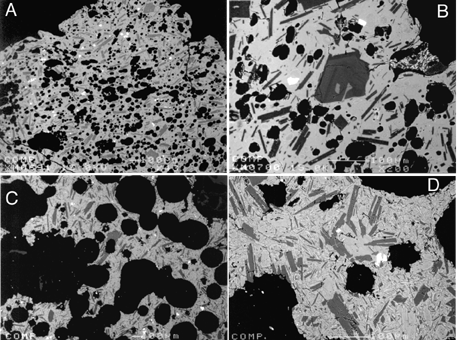
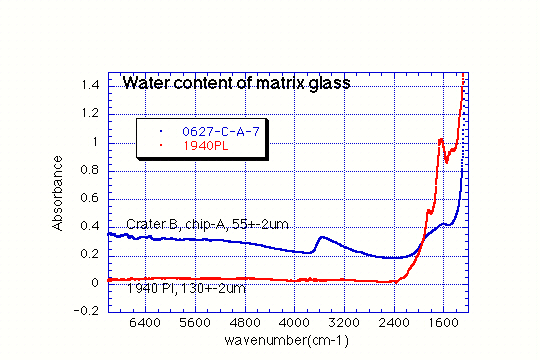
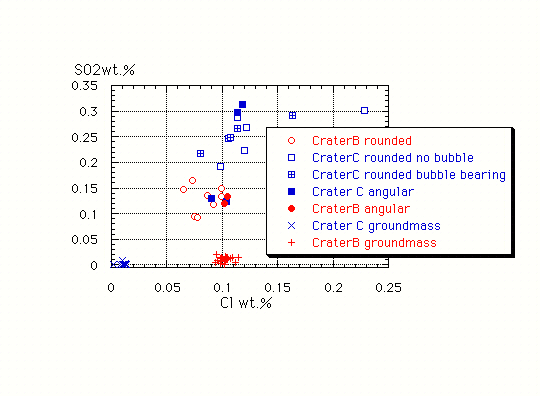
(by Y. Suzuki)
Glass inclusions can be classified into two based on their shapes, i.e. rounded and angular ones. Sulfur content in glass inclusions ranges from 0.1wt% to 0.3 wt% in SO2 basis. Sulfur content in undevitrified glass in groundmass is almost zero.
